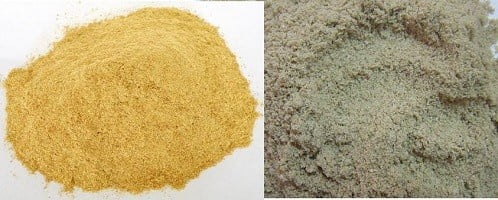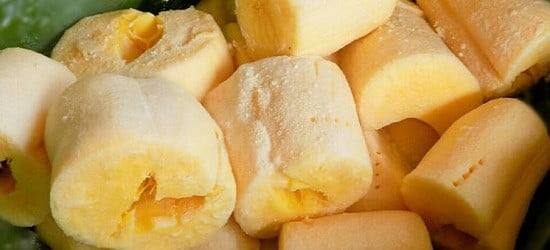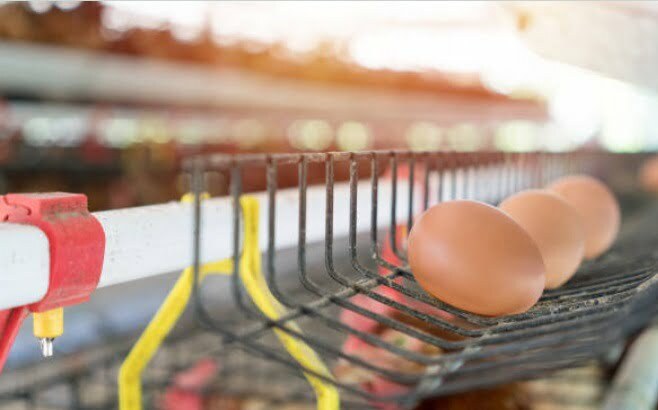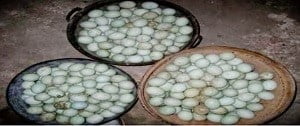
The Difference Between Dedak and Bekatul
Perhaps in your place, the by-product of the rice mill is named as rice bran.
In our place, rice bran has two slightly different terms.
The first is “Dedak” and the second is “Bekatul”.
The terms dedak dan bekatul are almost the same terms for the rice miller by-product.
However, in fact both have little difference. The difference is as follows:
In plain view, the difference is:
Dedak is the by-product of the first rice mill, while Bekatul is the second.
Dedak is more coarse texture while Bekatul is finer.
The color of rice Dedak is more brown than Bekatul.
Bekatul is more dense than rice Dedak, if put in water, will sink all.
While dedak is not. There are some who still float if dedak put in water.
In quality, the difference between dedak and bekatul is as follows:
The nutrient content of dedak is lower than bekatul.
In addition, dedak has a higher crude fiber. The value of crude fiber from dedak is about 12%, whereas bekatul is about 3%.
Therefore, dedak is actually more suitable for use as ruminants animal feed , such as goats, sheep or cows.
While bekatul, more suitable for poultry, chicken and duck feed.
Furthermore, in this article, I do not distinguish between dedak and bekatul. Both of them I would call as rice bran.
Due to the fact, rice mills that distinguish between dedak and bekatul are very rare.
Nutritional content of rice bran
From several research publications, the nutritional value of rice bran is somewhat different.
The reason may be because of that, the term rice bran and rice bran is not too distinguished.
So, information about the nutritional content of rice bran will I say what it is
Table nutrition content of rice bran [1]
| Nutritional Contents | Amount (%) |
| Metabollic Energy (ME) | 2100 kkal/kg |
| Crude Protein (CP) | 12,9 |
| Fat | 13 |
| Crude Fiber (CF) | 11,4 |
| Calcium (Ca) | 0,07 |
| Phosphor (P) | 1,5 (0,21 % not attached to fitat) |
Table nutrition content of rice bran [2]
| Nutritional Contents | Amount |
| Water content | 10,61 |
| Protein | 9,96 |
| Fat | 5,96 |
| BETN | 37,32 |
| Crude Fiber | 30,39 |
Table nutrition content of rice bran [3]
| Nutritional Contents | Amounts (% DM) |
| Dry Matter | 92,68 |
| Organic Matter | 85,01 |
| Crude protein | 9,55 |
| Crude Fiber | 23,55 |
| Gross Energy | 3563 kkal/kg |
Actually, the nutrient content of rice bran has been given standard benchmark.
As a reference only, the quality requirement of rice bran nutrition according to SNI 01.3178-1996 [4] is as follows.
| Copositions(%) | Quality 1 | Quality 2 | Quality 3 |
| Water (max.) | 12 | 12 | 12 |
| Crude protein (min.) | 11 | 10 | 8 |
| Crude Fiber (max.) | 11 | 14 | 16 |
| Ash (max.) | 11 | 13 | 15 |
| Fat (max) | 15 | 20 | 20 |
| Ca | 0,04 – 0,3 | 0,04 – 0,3 | 0,04 – 0,3 |
| P | 0,6 – 1,6 | 0,6 – 1,6 | 0,6 – 1,6 |
| Aflatoksin (ppb) max | 50 | 50 | 50 |
| Silica (max) | 2 | 3 | 4 |
Anti Nutrition on rice bran
The use of rice bran in poultry feed, especially chicken, should not be too much.
The amount is between 20 – 30%. If more than that, can reduce the performance of livestock.
Even then, rice bran should be done biological engineering first. Biological engineering for example is in fermentation.
Why should fermentation be done?
Rice bran contains high crude fiber. In addition to high fiber crude, it also contains anti-nutritional substances.
Anti-nutrients in rice bran is phytic acid.
This phytic acid can bind calcium and phosphate minerals. In fact, these minerals are needed by livestock.
In addition to binding these minerals, phytic acid can also bind proteins. So that if the minerals and proteins are bound by phytic acid, the digestibility of the ration will inevitably be reduced.
Not only that, nutrients from feed ingredients are also not fully absorbed by livestock.
Phosphorus found in rice bran, as much as 80% is bound by phytic acid.
In fact, phytic acid is very difficult to digest.
In order for rice bran more easily digested, then this phytic acid must be decomposed. Which can unravel is the phytase enzyme.
This enzyme can be produced by certain bacteria. One of the bacteria is Trichoderma viride.
So, this bacteria is good if used as fermentation starter.
In addition to these bacteria, other bacteria that can produce phytase enzymes are aspergillus ficuum.
Starter fermentation should not be able to produce fitase enzyme.
Another function of fermentation is to break down complex substances into simpler substances.
For example proteins are decomposed into amino acids and carbohydrates are broken down into simpler molecular sugars.
If the structure is simpler, it will be easier to digest.
How to ferment rice bran
In this section I will describe how to make rice bran fermentation with several different bacteria starter.
The first time I will describe is my own experience in making rice bran fermentation.
1. Fermented rice bran with “Tape” yeast
This is the way I’ve done it. Here are the steps.
Prepare the ingredients, namely:
Rice bran (as needed).
Bacteria starter aspergilus niger. If difficulty getting aspergilus niger, can be replaced with yeast. The ratio between rice bran and yeast is 1 kg: 2 morsels.
Clean water and covered trays or plastic bags are large enough.
The steps are as follows:
Dampen the rice bran with water, the ratio is 3: 1 or approximately until the rice bran becomes “pero”.
The signs of “pero” are if the rice bran is clenched, it does not drip. When the fist is opened, the wad of rice bran does not spread.
Then steam the rice bran for 15 or 30 minutes. After that cooled to room temperature, then mix with yeast until evenly distributed.
The juice is pureed first. If yeast is mixed in the rice bran condition is still hot, can kill starter bacteria.
Put rice bran in a container or plastic bag tightly closed for 3 days.
After three days, open the rice bran. Before being given to livestock, it is better to be aired first.
Or dry it for long-term storage.
In this way, I can not provide scientific data on how much of the rice bran nutrition after fermentation.
However, there was one thing I was concerned about at the time.
After the fermentation is complete, then the fermented rice bran is dried in the sun.
Once dry, it turns out the texture of rice bran becomes softer. If squeezed, the result will be a smooth rice bran.
Unlike when rice bran has not been fermented, when squeezed by hand, still feels there is a rough texture in the hand.
2. Fermenting rice bran with yeast tape [3]
This is different from the way I did on the 1st point. However, this is a research that has been done.
Yeast used is yeast to make fermentation of cassava. This type of yeast is very easy to find in the market.

The purpose of fermentation with yeast is to know the changes of crude protein content and crude fiber from rice bran after fermentation.
The steps are as follows:
Provide a number of rice bran, for example as much as 100 grams.
Then mix the rice bran with 10 ml hot water. Stir well.
After mixing evenly, chill until completely cold.
After that, add the yeast and mix it until evenly distributed.
Then container and seal closed overnight or about 12 hours.
What is the amount of yeast?
To find out the best amount of yeast, the researchers did variations on the amount of yeast.
Variations in numbers are 2%, 4%, 6% and 8%.
So, if the bran is 100 grams of rice, then the number of yeast is respectively as much as 2 grams, 4 grams, 6 grams and 8 grams.
How is the result?
The results of this study only focus on the content of crude protein and crude fiber.
Simply put, the results will be given in the table below:
Nutritions | Not fermented rice bran | Fermented rice bran with yeast | |||
2 grams | 4 grams | 6 grams | 8 grams | ||
| Crude Protein | 9,55% | 10,56 | 11,05 | 12,12 | 15,17 |
| Crude Fiber | 13,60% | 16,04 | 16,71 | 17,39 | 18,61 |
The value of the nutrient content above is in percent dry weight.
I will comment a little with research conducted by students in the year 2011 this.
First. Of the many publication journals I have ever read, it is rare that a fermentation curing only overnight.
Second. The value of the crude protein, the increase is too much.
Third. After fermentation, the value of the crude fibers actually increases. This does not give a better value.
Increase in crude fiber can be explained in the fermentation of rice bran with em-4 below.
Immediately we go to the next research. Still about the fermentation of rice bran.
3. Fermented rice bran with EM-4 [2]
This time the study was conducted by academics from one of Makassar’s state universities.
His research on rice bran fermentation with an EM-4 starter. After that, the best results of the fermentation will be used for further research.
The next research is to use the best fermented rice bran, as the domestic poultry feed.
But this time I just focus on fermentation and the result only.
Ok, lets go. The steps of fermentation of rice bran with em-4 are as follows.
First of all, we activate the EM-4 first. The way, 10 ml of EM-4 + 10 ml molasses + 1 liter of clean water.
If the molasses do not have, can be replaced with 1 tablespoon of sugar.
Mix and stir all three until dissolved. After that, let stand for 12 hours. So that bacteria in EM-4 are active and ready to use.
The active EM-4 is then sprayed onto the rice bran until evenly distributed.
Rice bran then stored in tightly sealed containers for 3, 5 or 7 days.
The result?
Briefly, the results can be seen in the table below.
Nutritional Contents | Non fermented rice bran | fermented rice bran with EM-4 | ||
3 days | 5 days | 7 days | ||
| Water | 10.61 | 13.91 | 15.59 | 16.74 |
| Protein | 9.96 | 10 | 10.24 | 10.36 |
| Fat | 5.96 | 5.75 | 6.45 | 6.82 |
| BETN | 37.32 | 33.85 | 32.57 | 32.75 |
| Crude Fiber | 30.39 | 33.46 | 33.54 | 32.72 |
Can be seen in the table above. The value of the crude protein content is increasing.
But the increase is not that very drastic. Just a little bit more. This increase is due to the growing number of bacteria.
While the crude fiber, is also increasing.
But according to the researchers, the increase in crude fiber is not the quality of rice bran is getting worse.
However, because of the growing microbes, it turns out to produce other crude fiber outside the crude fiber of rice bran.
Next we will see how to ferment rice bran by other research. This time the starter was different.
4. Fermented rice bran with aspergillus ficuum
Microbes this one is quite difficult to find in the market. In contrast to aspergillus niger who has sold it online.
It seems, its availability is limited and only in academic circles who have it. For example in college biology laboratory.
In fact, the influence of rice bran fermentation with microbes is pretty good results.
Later we will see changes in nutrient content of rice bran after fermented with this one microbe.
Now take a look at the steps for fermenting rice bran with this microbe.
Rice bran plus 50% water. Then stir until mixed evenly.
After that, rice bran is steamed for 45 minutes. 45 minutes is calculated since the water begins to boil.
Finish in the steamed, rice bran cooled.
After the cold, rice bran plus aspergillus ficuum inoculum as much as 0.5%.
Inokulum aspergillus ficuum means that the starter is in active condition and the bacteria is ready for use.
If the rice bran 1 kg, then the microbanya as much as 5 grams. 2 kg of rice bran, 10 grams of microbes and so on.
Fermentation of rice bran with this microbe takes place in aerobic.
So, after the rice bran is mixed with the starter, the bran is placed in a perforated plastic.
More efficient if the bran is made thin flat with a thickness of about 2 cm.
The duration of fermentation is 3 days at room temperature.
After the fermentation is complete, the rice bran is dried at 50 ° C for 24 hours.
After that, milled and used as a feed.
Results after fermentation
After fermented with aspergillus ficuum microbe, rice bran has changed the nutritional content quite well.
Briefly I will give the results in the table below.
| Nutritions | Befor | After |
| Metabollic Energy (kkal/kg) | 2470 | 2338 |
| Crude protein % | 12.65 | 15.18 |
| Crude Fiber (%) | 9.17 | 12.23 |
| Fat (%) | 16.32 | 12.69 |
| BETN | 38,91 | 38,22 |
| Ash (%) | 11.08 | 12.34 |
| Ca (%) | 0.07 | 0.16 |
| P (%) | 2.24 | 2.47 |
From the table above shows that the fermentation of rice bran with aspergillun ficuum can provide changes in the nutritional content.
The raw protein rises. The increase in protein is largely due to the amount of microbes themselves.
Fat drops. This is because during development, microbes require carbohydrate bonding. This carbo is taken from fat and crude fiber.
The coarse fiber rises. The increase in crude fiber is due to the presence of carbon bond compounds in microbial cell walls.
Thus, the crude fiber is not derived from its bran but instead the additional crude fiber of the aspergillus ficuum microbe itself.
5. Fermented rice bran with Saccharomyces spp [5]
How to ferment this one, the same way above. That is in fermentation with aspergillus ficuum.
Only, aspergillus ficuum microbes replaced by Saccharomyces spp.
The steps are as follows:
Rice bran steamed for 45 minutes. The length of time is calculated since the boiling water is steamed, then cooled.
After cooling, the cultures of Saccharomyces spp were added as much as 0.20% of the weight of rice bran to be fermented.
After that, sprayed with 4% sugar solution while stirring evenly.
Furthermore, rice bran is inserted into polyetilene bags (plastic bags) that have been perforated in some places.
The goal is to get aerobic conditions, then incubated at room temperature for 3 days.
During the incubation, the substrate is conditioned at a thickness of 2 cm.
After the incubation period is complete, the product is dried for 24 hours at room temperature.
Once dry, then re-spun and ready to be mixed with other feed ingredients.
Results
The results of fermentation in this section does not vary much in the way above. It’s just that the protein value is smaller than the method that uses aspergillus ficuum.
The results can be briefly seen in the table below.
| Variables | Before | After |
| Dry matter (%) | 88.97 | 88.62 |
| Organic matter (%) | 89.85 | 90.39 |
| Crude Protein (%) | 10.93 | 13.01 |
| Crude Fiber (%) | 15.07 | 17.15 |
| Gross Energy (kkal/kg) | 3275.37 | 3312.05 |
Reference
[1] Siti Wahyuni H.S. 1995. Bioconversion of Rice Bran by Aspergillus ficuum to Reduce the Content of Phitate and Its Effect on the Laying Hens Performance. Postgraduate Program IPB Bogor (ID).
[2] Muhamad Nur Hidayat, Amriana Hifizah, Khaerani Kiramang, Astati. The Modification Of Chemical Composition Of Rice Bran And Its Application On The Ration Of Domestic Chicken. Faculty of Science and Technology Universitas Islam Negeri Alaudin, Makassar (ID).
[3] Pratiwi, widayati dkk. 2011. Fermentation of Rice Bran Using Yeast Saccharomyces cerevisiae to Increase Nutrition of Fish Feed. Student Creativity Program. IPB. Bogor (ID).
[4] Irianingrum, Retno. 2009. The Quality and Phytic Acid Content of Rice Bran Stored in Anaerobic Condition. Department of Nutrition Science and Feed Technology Faculty of Animal Husbandry IPB Bogor (ID).
[5] Wibawa A.A.P., Wirawan I W., dan Partama I.B.G. The Increase of Rice Bran Quality by Khamir Biofermentation as Feeding of Ducks. MAJALAH ILMIAH PETERNAKAN • Volume 18 Nomor 1 Tahun 2015.
 JOYNIM FARM Goat Farming, Cattle Farm, Laying Hens, Quail Farm, Gardening
JOYNIM FARM Goat Farming, Cattle Farm, Laying Hens, Quail Farm, Gardening




Best method of fermentation process in Aqua culture fush